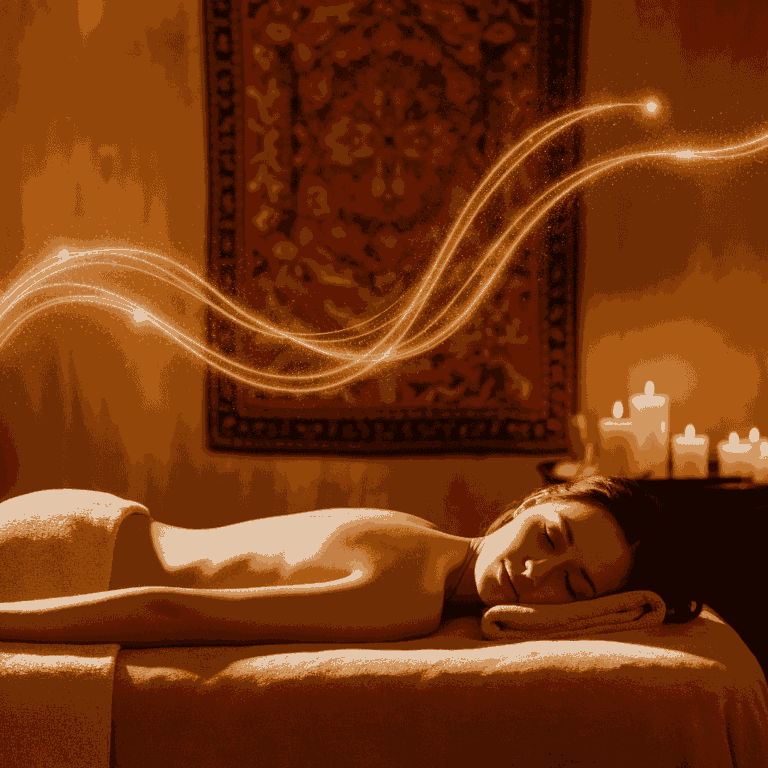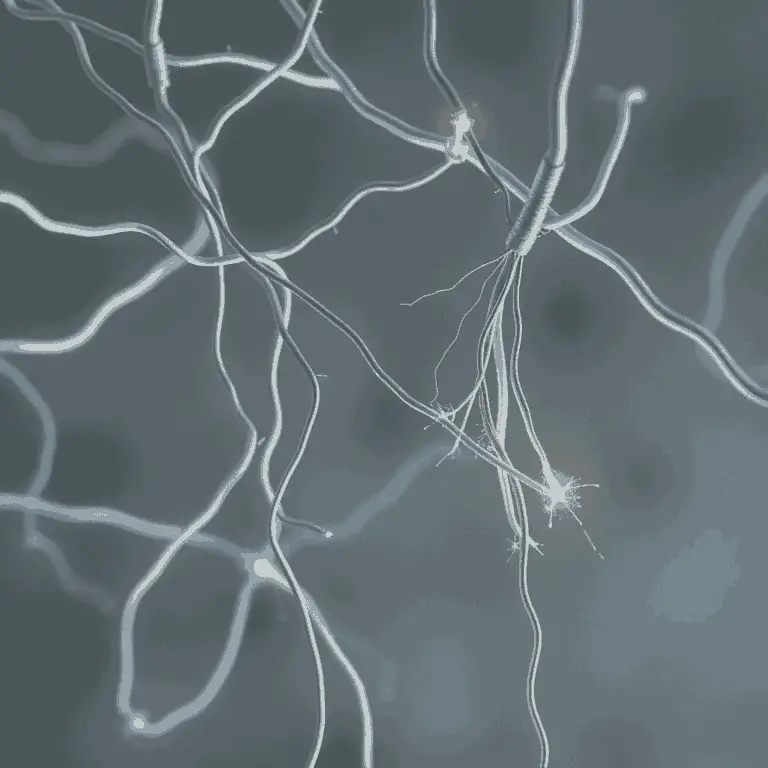
Polarity Therapy is a type of energy work that blends concepts from both Eastern and Western healing philosophies. Created by Dr. Randolph Stone in the mid-20th century, it’s grounded in the idea that life energy, or energy work, moves through the body in predictable patterns—like currents in a river. When those currents are flowing freely, we feel vibrant. When they’re blocked or disrupted, symptoms start to show up. This is why energy work is crucial for maintaining overall health and well-being.
But here’s what makes it different from other energy-based modalities: Polarity Therapy works with oppositional forces (positive, negative, and neutral) to rebalance that flow. Instead of just pushing energy around, it helps the body reconnect its own inner circuitry.
Energy work can also promote relaxation and reduce stress, enhancing the body’s natural healing processes.
Engaging in energy work can facilitate deeper connections to oneself and promote emotional healing.
Incorporating energy work into your wellness routine can enhance your overall sense of balance and vitality, making it an essential part of holistic health.
The system combines five elements:
- Energetic touch techniques (ranging from light to deep pressure)
- Stretching postures
- Breathing practices
- Dietary awareness
- Verbal processing
This five-part approach gives it range and depth, making it one of the most comprehensive forms of energy healing and energy work available.
The Philosophy Behind the Practice
At the heart of Polarity Therapy lies a few key ideas:
1. Life Energy Moves in Polarity
The body is an energetic system, and like magnets, it operates on polarities—positive, negative, and neutral. For energy to circulate properly, these poles need to stay in balance. If one area becomes overcharged while another is depleted, you might experience symptoms like fatigue, tension, emotional swings, or a general sense of disconnection.
2. Health Equals Flow
Health is defined not just by the absence of illness but by the free flow of energy. When energy is stuck or scattered, the body can’t regulate itself effectively. Polarity Therapy helps restore that movement so the body can return to a state of balance and clarity.
Understanding Energy Work in Polarity Therapy
Energy work in Polarity Therapy is about creating balance and flow. Practitioners use touch to stimulate the body’s natural energy pathways, facilitating healing and rejuvenation. By focusing on energy work, clients often experience profound emotional and physical transformations.
3. The Mind and Body Are Inseparable
During a Polarity Therapy session, energy work is intricately woven throughout, enhancing the body’s ability to heal itself.
Ever notice how emotional stress can show up physically? That’s no coincidence. Polarity Therapy recognizes that thoughts, feelings, and physical patterns are deeply intertwined. Releasing tension in the body can shift mental states—and vice versa.
What Happens During a Polarity Therapy Session?
If you’re picturing a spa massage or a quick energetic tune-up, Polarity Therapy is a bit different. It’s interactive, intuitive, and deeply personal.
Here’s what a session might involve:
1. Grounding Conversation
You’ll begin with a short dialogue about what’s going on—physically, emotionally, mentally. You don’t have to spill your life story, but even a little context helps the practitioner tune in to your energy field.
2. Energetic Touch Work
Ultimately, energy work empowers individuals to tap into their own innate healing abilities, making it a fundamental aspect of Polarity Therapy.
Lying fully clothed on a bodywork table, you’ll experience different types of touch—some light and still, some firm and dynamic. The practitioner will often work with two points simultaneously to encourage movement between positive and negative poles.
Energy work allows us to harness the transformative power of our own life force, promoting healing and well-being through various techniques.
You may feel:
- Tingling
- Heat
- Emotional release
- Deep relaxation
Different forms of energy work, including physical touch and breath, create opportunities for healing on both physical and emotional levels.
This isn’t about pushing tissue around—it’s about creating energetic pathways for flow to resume.
The practitioner’s touch during energy work can bring awareness to areas where energy may be blocked, encouraging a smoother flow throughout the session.
3. Movement or Stretching (If Needed)
Gentle postures or guided movements might be included to release blocked areas. These movements are often inspired by yoga but tailored to your needs in that moment.
4. Breathing and Awareness
Breath is a tool for moving energy, so you may be guided to focus on your inhale and exhale, especially if you’re holding tension.
5. Integration and Aftercare
You’ll likely leave feeling more connected, open, or aware. Many people also report deeper sleep, emotional clarity, and physical ease in the days following a session.
How It’s Different From Other Modalities
Polarity Therapy sits at an interesting intersection between several healing systems. Here’s how it stacks up:
| Modality | Main Focus | How It Works |
|---|---|---|
| Reiki | Universal energy flow | Hands-on/off energy channeling |
| Massage Therapy | Muscular and circulatory system | Physical manipulation of tissue |
| Acupuncture | Meridian points and qi flow | Insertion of needles at energy channels |
| Polarity Therapy | Flow between energetic poles | Touch, movement, breath, and verbal dialogue |
What makes Polarity Therapy so unique is that it bridges all of these approaches while focusing specifically on the flow between energy poles in the body.
What Can Polarity Therapy Help With?
While it’s not a cure-all or a replacement for medical care, Polarity Therapy has been used to support a wide range of physical and emotional issues:
- Chronic stress and burnout
- Tension headaches
- Sleep disturbances
- Emotional overwhelm
- Digestive issues
- Low energy or fatigue
- Trauma recovery
- Lack of clarity or “stuck” feeling
That said, many people don’t come to Polarity Therapy with a specific issue. They just want to feel more like themselves again—present, aligned, and centered.
What Does Science Say?
Polarity Therapy is considered a complementary or alternative therapy, so large-scale studies are still limited. However, smaller studies and client-reported outcomes suggest it may:
By integrating energy work into daily practices, individuals can cultivate a greater sense of harmony and well-being.
- Reduce anxiety and perceived stress levels
- Improve sleep and mood
- Enhance feelings of connectedness and well-being
- Support recovery from trauma when used alongside other modalities
A study published in Alternative Therapies in Health and Medicine reported that patients undergoing Polarity Therapy sessions during cancer treatment reported reduced fatigue and emotional distress compared to those who didn’t.
It’s not about treating disease—it’s about optimizing your inner ecosystem so your body can do what it does best: heal and regulate itself.
Myths and Misconceptions
“Is it just woo-woo?”
Nope. It’s grounded in anatomy and physiology, and most practitioners have extensive bodywork or therapeutic training.
“Is it passive like Reiki?”
Not exactly. Polarity can be quite interactive. There’s touch, movement, and even occasional dialogue involved.
“Is it spiritual?”
It can be, if that’s your intention. But it’s not tied to any religion or dogma. It meets you where you are.
Incorporating energy work into your routine can also enhance mental clarity and emotional stability.
Practical Tips: Making the Most of Your Session
- Arrive well-hydrated. Energy moves more easily through a well-hydrated system.
- Dress comfortably. You’ll stay fully clothed, but soft, flexible fabrics help.
- Be open. You don’t need to “do” anything, but staying mentally present helps you get the most out of it.
- Journal afterward. Thoughts and insights often arise post-session.
- Don’t rush back into stress. Give yourself a buffer after your session if possible.
Frequently Asked Questions
Q: How long does it take to see results?
Some people feel lighter and clearer right away. Others notice changes over the following days. Like any healing practice, it’s cumulative.
Energy work is not just a therapeutic approach; it’s a mindset that can transform your daily life.
Q: Can I combine it with other therapies?
Yes! It works beautifully alongside massage, talk therapy, acupuncture, and more.
Q: Is it safe during pregnancy?
Generally yes, but always inform your practitioner if you’re pregnant so they can adjust techniques accordingly.
The principles of energy work go beyond therapy sessions, encouraging a lifestyle centered around awareness and balance.
Q: How often should I receive it?
It depends on your goals. Weekly or bi-weekly sessions are common when working through specific issues. Monthly can be great for maintenance.
Practicing energy work regularly can lead to sustained improvements in your overall well-being.
Final Thoughts: Realignment Over Quick Fixes
Polarity Therapy isn’t about symptom-chasing. It’s about tapping into a deeper, often overlooked level of awareness—the energetic terrain where patterns take shape before they manifest physically. It gives your body a chance to reset, your mind a moment to breathe, and your emotions a space to be witnessed.
That’s not something you’ll always find in a pill or a quick fix. But you might just find it here.
Whether you’re navigating stress, looking to feel more like yourself, or simply curious about types of energywork that go beyond the surface, Polarity Therapy has something meaningful to offer. Sometimes the most profound shifts begin with something as subtle as stillness—and a willingness to listen.
It’s essential to remain open to the possibilities that energy work can bring into your life.
The journey of energy work can lead to profound insights and lasting change.
Recognizing the importance of energy work in your life can open doors to new opportunities for growth.









